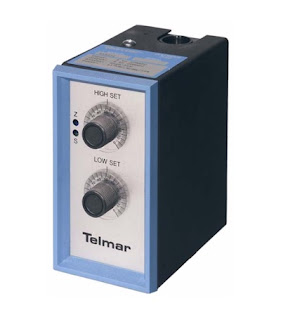 |
| Oil refineries can have different specialties and function |
The petroleum refining industry provides an expansive market for process measurement and control instrumentation and equipment, valves, and process analyzers. Having a basic understanding of the industry can help purveyors of instrumentation and equipment properly address customer needs, as well as recognize where opportunities may lie. Here is a summary of the types of plants and processes.
Petroleum refineries produce liquefied petroleum gases (LPG), motor gasoline, jet fuels, kerosene, distillate fuel oils, residual fuel oils, lubricants, asphalt (bitumen), and other products through distillation of crude oil or through re-distillation, cracking, or reforming of unfinished petroleum derivatives.
There are three basic types of refineries:
- Topping refineries
- Hydroskimming refineries
- Upgrading refineries (also referred to as “conversion” or “complex” refineries).
Topping refineries have a crude distillation column and produce naphtha and other intermediate products, but not gasoline. There are only a few topping refineries in the U.S., predominately in Alaska.
Hydroskimming refineries have mild conversion units such as hydrotreating units and/or reforming units to produce finished gasoline products, but they do not upgrade heavier components of the crude oil that exit near the bottom of the crude distillation column. Some topping/hydroskimming refineries specialize in processing heavy crude oils to produce asphalt.
The vast majority (75 to 80 percent) of the approximately 150 domestic US refineries are
upgrading/conversion refineries. Upgrading/conversion refineries have cracking or coking operations to convert long-chain, high molecular weight hydrocarbons (“heavy distillates”) into smaller hydrocarbons that can be used to produce gasoline product (“light distillates”) and other higher value products and petrochemical feedstocks.
Figure 1 provides a simplified flow diagram of a typical refinery. The flow of intermediates between the processes will vary by refinery, and depends on the structure of the refinery, type of crude processes, as well as product mix.
 |
Figure 1 - Refinery Flow Diagram
Wikipedia - www.en.wikipedia.org/wiki/Petroleum_refining_processes |
The first process unit in nearly all refineries is the crude oil or “atmospheric” distillation unit. Different conversion processes are available using thermal or catalytic processes, e.g., delayed coking, catalytic cracking, or catalytic reforming, to produce the desired mix of products from the crude oil. The products may be treated to upgrade the product quality (e.g., sulfur removal using a hydrotreater).
Side processes that are used to condition inputs or produce hydrogen or by-products include crude conditioning (e.g., desalting), hydrogen production, power and steam production, and asphalt production. Lubricants and other specialized products may be produced at special locations.























